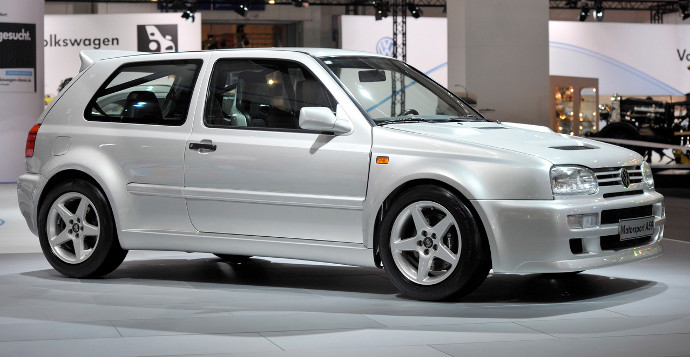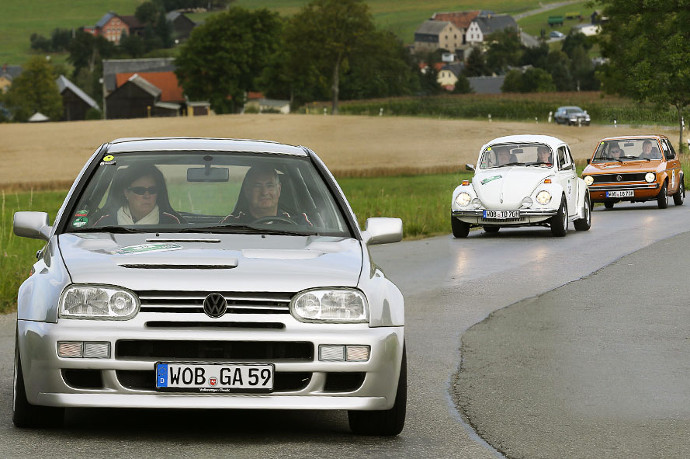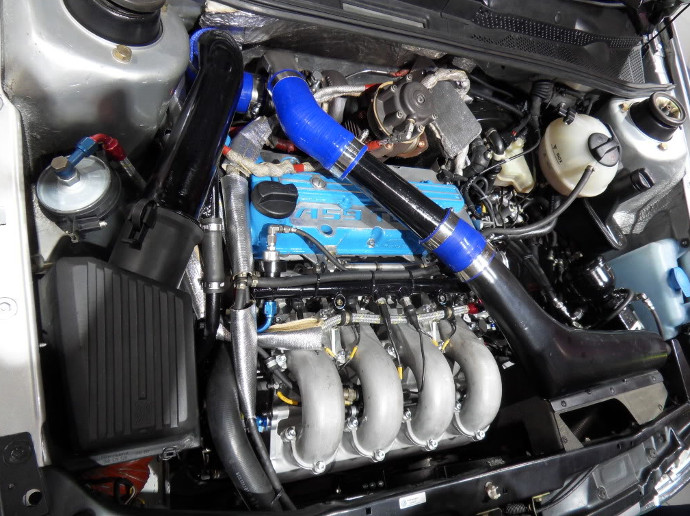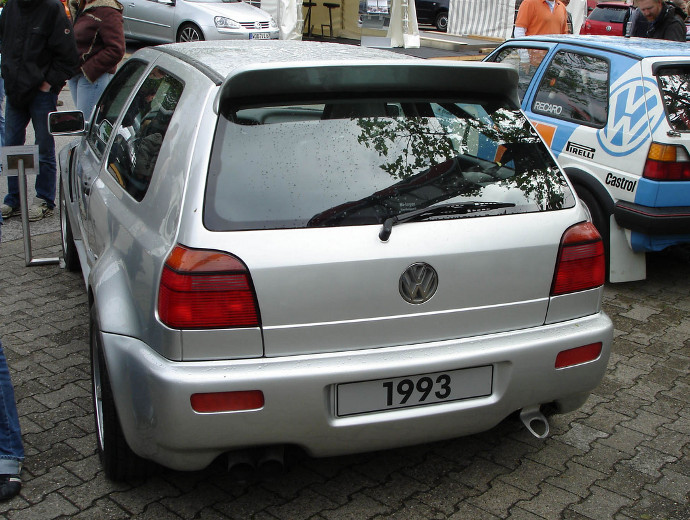If it had pushed ahead with production of its steroid pumping Mk3 Golf A59, VW could have become a key player on the motorsport scene in the early nineties. Not only that, but the Mk3 Golf as a whole could have enjoyed a far rosier fate. Here’s the story of what might have been Wolfsburg’s take on the Mitsubishi Evo.
Although VW had officially dropped out of involvement in rallying in the late 1980s, that didn’t mean it wasn’t keeping a beady eye on what other manufacturers were doing. Or indeed secretively developing its own rally car contender and arguably one of the most impressive Golfs of all time…

And this is how it almost happened. In 1992, VW embarked on a feasibility study with the objective of designing a Golf that was capable of winning the 1994 World Rally Championship. At the heart of the build was a Mk3 Golf with four-wheel drive and a turbocharger. Schmidt Motorsport (SMS) was roped in to develop a prototype, and the car was given the codename A59.

Beneath that hard as nails looking exterior was a radical all-aluminium engine hooked up to a six-speed gearbox that operated in tandem with electronically controlled differentials. Despite being approved and an order placed for the necessary parts needed to build the 2500 road cars to meet WRC homologation rules, however, financial restraints meant the project was shelved. Though not before a stunning prototype and a few early examples had emerged…

Instead of using the VW’s existing 1984cc 16v unit, Schmidt developed a more revvy square bore 1998cc design of its own, bolting on a Garrett T3 turbo to produce a buttock clenching 275bhp. In a quest for motorsport dominance the firm also overlooked VW’s contemporary Syncro four-wheel drive fitted to the Rallye in favour of a bespoke electronic affair which ended up more like the Haldex system VW adopted later on. The bodywork itself was equally innovative with some panels made of a unique blend of carbon and Kevlar, while other features included an integral rollcage, hip hugging Recaro A8 bucket seats and a digital dashboard.
There’s no doubt the A59 could have been a gamechanger for VW, and if a production model had been made available it would have offset the disappointment felt by Golf fans at the time who were critical of the Mk3’s less sporty character.
As an enigmatic reminder of what might have been, the A59 could have indeed been the Escort Cosworth, Lancia Delta Integrale or the Subaru Impreza WRX of its time. We had the Mk3 VR6 of course, but that was never really meant for serious competition. As for A59 survivors, journalist Chris Eyre has only recently exploded a number of long held myths. It turns out SMS still has the original prototype, car One is displayed in Volkswagen’s Wolfsburg museum and there are thought to be two other cars/shells still in existance along with a number of bodykits and a lost wind tunnel prototype…

Either way, it’s a rather special car – and one that deserves pride of place in VW motorsport’s history books.
Ian
The opinions expressed here are the personal opinions of the author and do not necessarily represent the views and opinions of VW Heritage


The A59 story is a minefield due to poor information given out in the early ’90s when the story broke, plus the car being quickly forgotten – and then internet myths developing a decade later as enthusiasts started to dig through it all.
The belief that one car survived exists because the other obvious one was put away for storage just around the time that the internet forums really came on song. It was assumed lost, but it was safely stored, out of sight.
After extensive research, it transpired there are four cars / shells surviving, plus a lost wind tunnel prototype.
An article covering the entire story is here on pdf download.
http://sms-engineering.de
It includes a source of replica body panels and also deals with the “3rd bodykit” story fitted to the well known blue GTI VR6 Drivers Edition in British Columbia. The idea that it used the last remaining bodykit from SMS had embedded itself into internet folklore over the last decade, whereas it was a replica kit. This is all covered in the article.
Hi Chris, thanks for the invaluable update on the remarkable A59 story. It was certainly a rather formidable machine! Ian
Thanks for the link Chris, hadn’t seen this article until now. Replica should be used lightly, as the A59 body panels that Nathan had ~2000-2001 in Portland OR(regretfully I never purchased them when offered, was young and money was tied up in a Golf2 16V) were made from molds that were made from the original SMS panels. I believe that set went onto the blue Mk3 that made its way to NGP.
Hello, do you have a copy of the PDF it seems to have been taken down from the site. I have some scans of magazine articles with pictures of the original prototype from late 1993 I can give to you to add to this. Thanks Martin